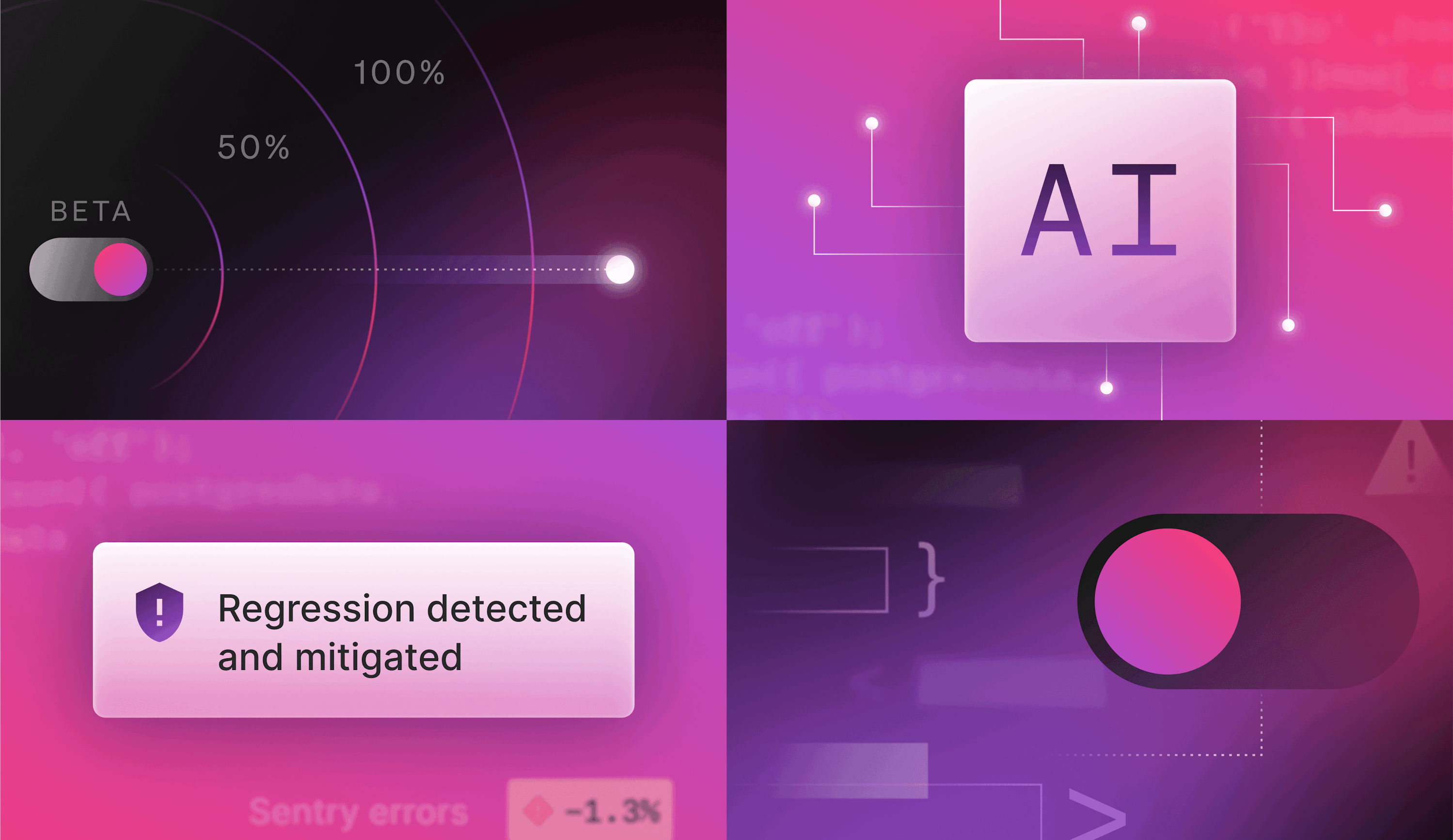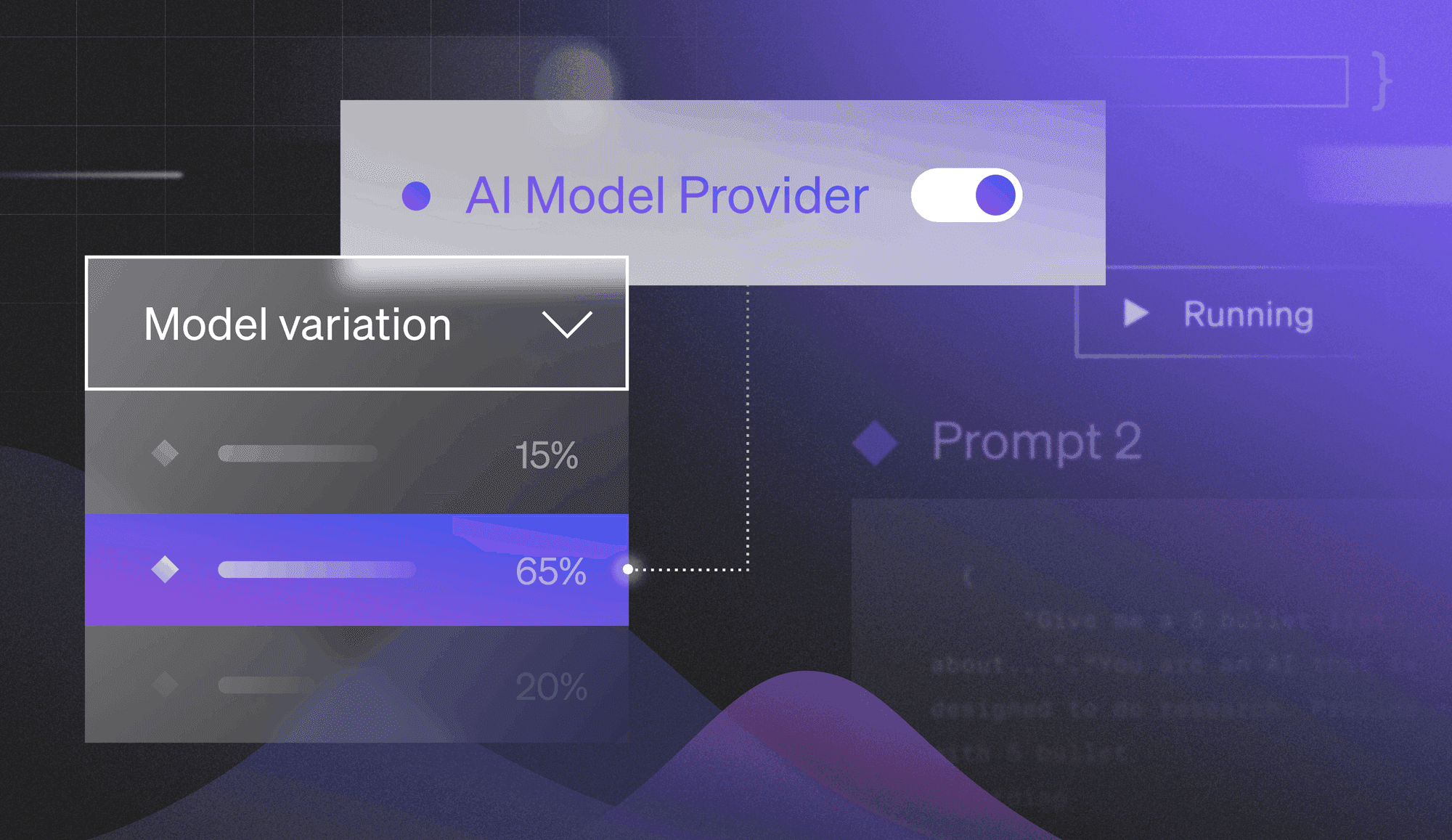Key Takeaways
- GenAI will force a faster pace of innovation and increase risk.
- Engineering organizations will push to standardize safety nets (such as feature flags).
- Adoption of progressive delivery will grow.
- Teams will prioritize defining and tracking key release metrics.
In the dynamic landscape of software development, 2024 will likely bring significant shifts in release management practices. As a feature management provider, we've identified trends that relate especially to the problems organizations are looking to solve with feature flags. Here are the top four release management trends we’re likely to see emerge in 2024.
1. GenAI will force a faster pace of innovation and increase risk
In 2024, we expect to see software teams grapple with trying to gain the "velocity" benefits of GenAI while maintaining a low risk profile. According to LaunchDarkly’s Director of Developer Relations Cody De Arkland, "GenAI is forcing companies to re-enter a space of rapid innovation in order to stay competitive in the market. But this increased pace has the downside of increasing risk, particularly in the software release process.”
Moreover, a recent study shows that generative AI code introduces potential risks due to higher code churn and increased copy/pasted code.
To manage these risks, teams will need to improve their testing protocols. For example, they would benefit from establishing more robust beta testing programs, especially for features that have been built with the help of GenAI or that contain AI models. Targeted rollouts, kill switches, and operational experiments will also play a critical role in preventing GenAI features from negatively impacting users.
Regardless of GenAI, we would still expect to see organizations prioritize risk mitigation for the sake of faster innovation. But GenAI intensifies things.
With risk comes the possibility of great reward. Teams that can manage GenAI risk will drive the next generation of consumer products and reap the benefits that follow.
2. Engineering orgs will push to standardize safety nets
In 2024, we expect organizations to work toward implementing standard tools and practices aimed at safely accelerating innovation. For many development teams, feature management is a safety net that gives them the confidence to deploy more frequently. Advanced organizations centralize and standardize feature management on a large scale. Less mature organizations, in which only a few scattered teams use feature flags, will likely pursue a similar path to standardization.
It will be critically important to balance innovation with risk management in software development. Feature flags change the traditional deployment workflow by decoupling deploy and release, allowing new code to exist in a production deploy but not be executed and, therefore, not released. This safety net enables teams to both lower risk and deploy more frequently.
During our recent Software Release Summit, Krista Sappington, VP of IT Application Management at BOK Financial, highlighted the need for flexibility, control, and safety. “If you’re going to introduce a major client-facing feature, there’s an appetite to ensure everything is wrapped in a flag. We’ve got some developers advancing this effort. [It is] ownership and trust to ensure things are appropriately mitigated in terms of risk."
"If you’re going to introduce a major client-facing feature, there’s an appetite [among our developers] to ensure everything is wrapped in a flag." —Krista Sappington, VP of IT Application Management, BOK Financial
3. Expect an increase in the adoption of progressive delivery
We expect to see more product and development teams adopt progressive delivery as a standard practice in 2024. Progressive delivery is a development process in which teams gradually roll out features to select users or audience segments. This delivery strategy minimizes the risks of pushing new features to the production environment. Put simply, progressive delivery is all about controlling the delivery of digital experiences.
Aaron Kerwin, Director, Software Engineering at Datasite, a global SaaS provider serving customers in investment banking, private equity firms, and larger corporations, discussed the next maturity stage of the software development lifecycle (SDLC) during LaunchDarkly’s recent Software Release Summit.
Aaron explained that previous stages of maturity in the SDLC focused on increasing the speed of software delivery by getting dev and ops working more collaboratively. The next phase of maturity, in Aaron's view, focuses more on control. Engineers will still be shipping changes continuously, but now other stakeholders in the broader product delivery team will have more control over when those changes actually get released to customers.
"The next thing I see is the ability to control your changes. On the engineering side, we want to push changes out 15 to 25 times a day...The ability to manage change with feature flags seems like the next maturity stage on how the SLDC works to really streamline and reduce the risk." —Aaron Kerwin, Director, Software Engineering, Datasite
iCIMS, a leading cloud platform for recruiting, embodies the kind of control to which Aaron refers in how they control their release cadence. Using LaunchDarkly feature flags, developers at iCIMS deploy new features continuously, but then release managers wait to release those features to customers until the associated training materials are ready.
This decoupling of deployments from releases is a foundational capability of progressive delivery. When teams adopt progressive delivery strategies, teams can control their release process, increase speed, and mitigate inherent development friction.
4. Teams will prioritize defining and tracking key release metrics
We expect to see development teams look for better, more precise metrics to track software delivery performance. If they haven't already, many teams will likely start tracking the Four Key DORA metrics—in particular, deployment frequency and mean time to recover (MTTR) from an incident. Teams with more mature release practices may take things a step further and track metrics like release frequency or observability metrics at the feature level (something we’re enabling with Release Guardian).
Regardless of the specific metrics tracked, we will see an increased appetite for more data about release performance and impact.
"We want to understand—where are we at?," said Krista. "Is our rate of changes [being released] good? Are the changes successful? What does good look like, and how do we take it to the next level?"
Aaron also touched on how his team might improve processes and drive results through better performance measurement. “We had to have all our normal processes and features going out while we were working on this whole new experience at the same time ... What if you could measure it? What if I could go back and say, 'How many errors are we having in production? And what are those outage times in tracking that?' And then start to make improvements to your release process, and be able to show the value as you make those changes. I think that would be really powerful."
So, what’s next?
Feel free to block out some time and watch the whole discussion between Aaron and Krista. You can also catch up on all the Software Release Summit talks to hear more about the trends and technologies shaping the software development and delivery landscape, as well as get insights and best practices from leaders in the industry.
Also, the LaunchDarkly team will be tackling all of these topics (and way more!) at Galaxy, the leading conference for software builders and DevOps innovators in San Francisco on May 21-22, 2024. Register today!












.jpg?ixlib=gatsbyFP&auto=compress%2Cformat&fit=max&rect=0%2C0%2C1234%2C1258&w=57&h=57)











